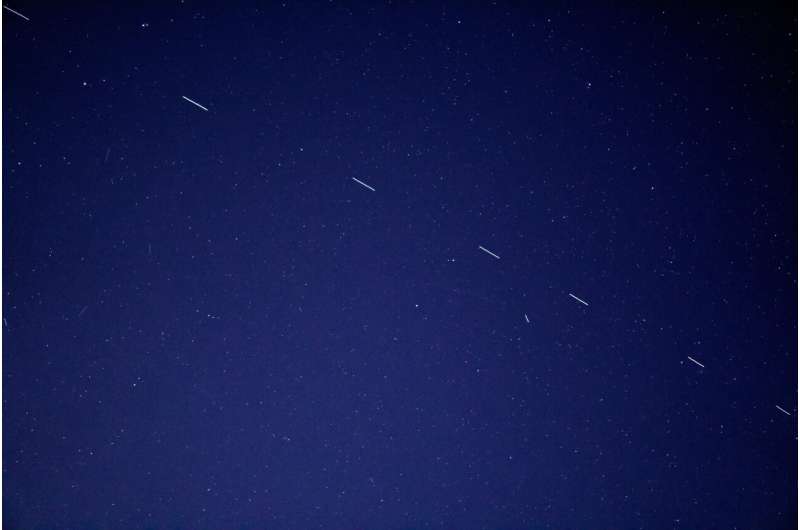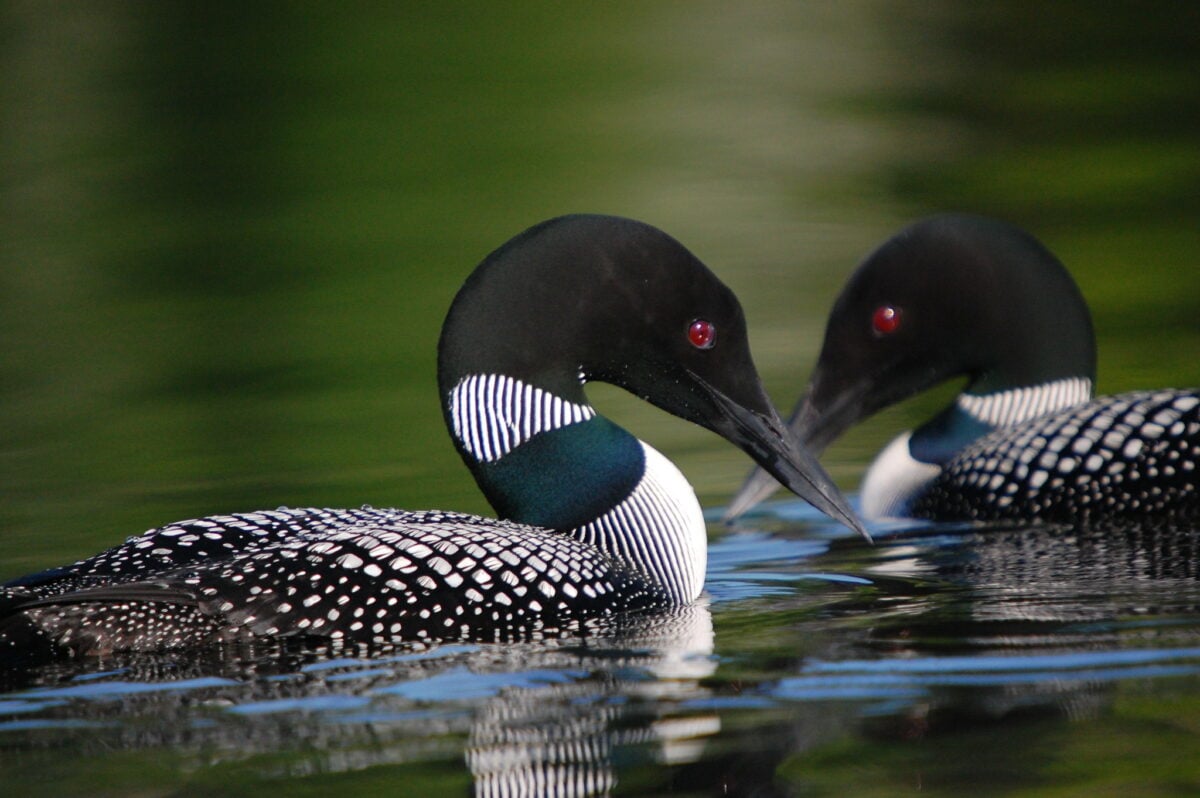Science
Boeing prepares to launch astronaut capsule for Nasa – BBC News

America is about to take another step towards being able to launch its own people into orbit again – a capability it’s not had for nearly nine years.
The Boeing company is going to launch a test capsule to the International Space Station (ISS).
Known as Starliner, the vehicle will be flying uncrewed on this occasion.
But if it performs without incident, astronauts will start using the craft next year.
Lift-off atop an Atlas rocket from Cape Canaveral Air Force Station in Florida is scheduled for 06:36 local time (11:36 GMT) on Friday.
The automated mission to the ISS should last a week. The capsule will come home to New Mexico, using parachutes and airbags to make a soft landing on desert terrain in the early hours of 28 December.
Not since 2011, when the shuttles were retired, have Americans launched from their own soil; US astronauts have been hitching rides in Russian Soyuz capsules instead.
Starliner is the second of the new systems the American space agency (Nasa) hopes will restore independent human access to low-Earth orbit.
The other crew capsule in development is called Dragon, a product of California’s SpaceX company.
Both should be approved for human use in the first half of 2020.
When that happens, Nasa will start purchasing seats in what will become commercial astronaut taxi services.
Contracting out space transportation in this way is designed to free up money for the agency to concentrate on the harder and more expensive task of getting people to the Moon and Mars.
“Nasa wants to be one customer of many customers in a very robust commercial marketplace for human spaceflight in the future,” said the agency’s administrator, Jim Bridenstine.
“The ultimate goal being we want to drive down costs, increase innovation, and increase access to space in a way that we’ve never seen before.”
Starliner won’t be completely empty on its ascent to orbit.
It will be carrying 270kg of supplies to the ISS – mostly food – and an anthropomorphic test device (ATD), or dummy, nicknamed “Rosie”.
The ATD is covered in sensors to record the onboard environment. “She” will tell engineers how much discomfort a real astronaut might experience during the more violent phases of flight, such as on launch or during landing.
Starliner is going up on the well proven Atlas 5 rocket.
The latest version of this vehicle was developed originally only to launch satellites, but with 80 flights and no losses to its name – there is high confidence in its suitability to launch crew.
The Atlas family of rockets actually has quite a storied history in human spaceflight. They were used in the Mercury programme in the early 1960s.
“John Glenn was launched in the first (American) human orbital mission on an Atlas rocket in 62,” remarked John Elbon, the chief operating officer for United Launch Alliance (ULA), which manufactures the Atlas.
Nasa has seeded Starliner and Dragon under its Commercial Crew Programme (CCP). Boeing and SpaceX were given milestone payments to encourage the development of their capsules.
The vehicles are somewhat late, however; they should have been flying in 2017.
That they are still at the demonstration stage is due in part to Congress squeezing the amount of money the agency could spend on the initiative. But there have also been technical set-backs, such as the explosive destruction of a Dragon capsule on a test stand.
“Building new spacecraft and developing hardware is really hard, right? Folks say it looks like it’s taking a long time, but I think when you go back and look at development history over time, this programme’s been doing a good job of meeting its obligations,” said Nasa manager Kathy Leuders.
Assuming all goes well over the next week, Starliner should get the green light to ferry people to the ISS early next year.
The first crew has already been selected. It will comprise Mike Fincke and Nicole Mann, both Nasa employees, and the Boeing test pilot Chris Ferguson (Ferguson was the commander on the final shuttle mission and left Nasa to help Boeing develop Starliner).
Mr Finke, who is one of the most experienced astronauts in history with more than a year of his life spent in orbit, said the new astronaut taxis should open up a new era in human spaceflight.
“We crew, we’re looking forward to commercial infrastructure in space because this means more flight assignments for us, which is what we as astronauts really live for. But it’s also more flight assignments for the non-government astronaut types. This is a really interesting time,” he told reporters on Thursday.
Jonathan.Amos-INTERNET@bbc.co.uk and follow me on Twitter: @BBCAmos
Science
SpaceX launch marks 300th successful booster landing – Phys.org


SpaceX sent up the 30th launch from the Space Coast for the year on the evening of April 23, a mission that also featured the company’s 300th successful booster recovery.
A Falcon 9 rocket carrying 23 of SpaceX’s Starlink internet satellites blasted off at 6:17 p.m. Eastern time from Cape Canaveral Space Force Station’s Space Launch Complex 40.
The first-stage booster set a milestone of the 300th time a Falcon 9 or Falcon Heavy booster made a successful recovery landing, and the 270th time SpaceX has reflown a booster.
This particular booster made its ninth trip to space, a resume that includes one human spaceflight, Crew-6. It made its latest recovery landing downrange on the droneship Just Read the Instructions in the Atlantic Ocean.
The company’s first successful booster recovery came in December 2015, and it has not had a failed booster landing since February 2021.
The current record holder for flights flew 11 days ago making its 20th trip off the launch pad.
SpaceX has been responsible for all but two of the launches this year from either Kennedy Space Center or Cape Canaveral with United Launch Alliance having launched the other two.
SpaceX could knock out more launches before the end of the month, putting the Space Coast on pace to hit more than 90 by the end of the year, but the rate of launches by SpaceX is also set to pick up for the remainder of the year with some turnaround times at the Cape’s SLC-40 coming in less than three days.
That could amp up frequency so the Space Coast could surpass 100 launches before the end of the year, with the majority coming from SpaceX. It hosted 72 launches in 2023.
More launches from ULA are on tap as well, though, including the May 6 launch atop an Atlas V rocket of the Boeing CST-100 Starliner with a pair of NASA astronauts to the International Space Station.
ULA is also preparing for the second launch ever of its new Vulcan Centaur rocket, which recently received its second Blue Origin BE-4 engine and is just waiting on the payload, Sierra Space’s Dream Chaser spacecraft, to make its way to the Space Coast.
Blue Origin has its own rocket it wants to launch this year as well, with New Glenn making its debut as early as September, according to SLD 45’s range manifest.
2024 Orlando Sentinel. Distributed by Tribune Content Agency, LLC.
Citation:
SpaceX launch marks 300th successful booster landing (2024, April 24)
retrieved 24 April 2024
from https://phys.org/news/2024-04-spacex-300th-successful-booster.html
This document is subject to copyright. Apart from any fair dealing for the purpose of private study or research, no
part may be reproduced without the written permission. The content is provided for information purposes only.
Science
Wildlife Wednesday: loons are suffering as water clarity diminishes – Canadian Geographic


The common loon, that icon of northern wilderness, is under threat from climate change due to declining water clarity. Published earlier this month in the journal Ecology, a study conducted by biologists from Chapman University and Rensselaer Polytechnic Institute in the U.S. has demonstrated the first clear evidence of an effect of climate change on this species whose distinct call is so tied to the soundscape of Canada’s lakes and wetlands.
Through the course of their research, the scientists found that July rainfall results in reduced July water clarify in loon territories in Northern Wisconsin. In turn, this makes it difficult for adult loons to find and capture their prey — mainly small fish — underwater, meaning they are unable to meet their chicks’ metabolic needs. Undernourished, the chicks face higher mortality rates. The consistent foraging techniques used by loons across their range means this impact is likely echoed wherever they are found — from Alaska to Canada to Iceland.
The researchers used Landsat imagery to find that there has been a 25-year consistent decline in water clarity, and during this period, body weights of adult loon and chicks alike have also declined. With July being the month of most rapid growth in young loons, the study also pinpointed water clarity in July as being the greatest predictor of loon body weight.
One explanation for why heavier rainfall leads to reduced water clarity is the rain might carry dissolved organic matter into lakes from adjacent streams and shoreline areas. Lawn fertilizers, pet waste and septic system leaks may also be to blame.
The researchers, led by Chapman University professor Walter Piper, hope to use these insights to further conservation efforts for this bird Piper describes as both “so beloved and so poorly understood.”
Return of the king
Science
Giant prehistoric salmon had tusk-like teeth for defence, building nests


|
|
The artwork and publicity materials showcasing a giant salmon that lived five million years ago were ready to go to promote a new exhibit, when the discovery of two fossilized skulls immediately changed what researchers knew about the fish.
Initial fossil discoveries of the 2.7-metre-long salmon in Oregon in the 1970s were incomplete and had led researchers to mistakenly suggest the fish had fang-like teeth.
It was dubbed the “sabre-toothed salmon” and became a kind of mascot for the Museum of Natural and Cultural History at the University of Oregon, says researcher Edward Davis.
But then came discovery of two skulls in 2014.
Davis, a member of the team that found the skulls, says it wasn’t until they got back to the lab that he realized the significance of the discovery that has led to the renaming of the fish in a new, peer-reviewed study.
“There were these two skulls staring at me with sideways teeth,” says Davis, an associate professor in the department of earth sciences at the university.
In that position, the tusk-like teeth could not have been used for biting, he says.
“That was definitely a surprising moment,” says Davis, who serves as director of the Condon Fossil Collection at the university’s Museum of Natural and Cultural History.
“I realized that all of the artwork and all of the publicity materials and bumper stickers and buttons and T-shirts we had just made two months prior, for the new exhibit, were all out of date,” he says with a laugh.
Davis is co-author of the new study in the journal PLOS One, which renames the giant fish the “spike-toothed salmon.”
It says the salmon used the tusk-like spikes for building nests to spawn, and as defence mechanisms against predators and other salmon.
The salmon lived about five million years ago at a time when Earth was transitioning from warmer to relatively cooler conditions, Davis says.
It’s hard to know exactly why the relatives of today’s sockeye went extinct, but Davis says the cooler conditions would have affected the productivity of the Pacific Ocean and the amount of rain feeding rivers that served as their spawning areas.
Another co-author, Brian Sidlauskas, says a fish the size of the spike-toothed salmon must have been targeted by predators such as killer whales or sharks.
“I like to think … it’s almost like a sledgehammer, these salmon swinging their head back and forth in order to fend off things that might want to feast on them,” he says.
Sidlauskas says analysis by the lead author of the paper, Kerin Claeson, found both male and female salmon had the “multi-functional” spike-tooth feature.
“That’s part of our reason for hypothesizing that this tooth is multi-functional … It could easily be for digging out nests,” he says.
“Think about how big the (nest) would have to be for an animal of this size, and then carving it out in what’s probably pretty shallow water; and so having an extra digging tool attached to your head could be really useful.”
Sidlauskas says the giant salmon help researchers understand the boundaries of what’s possible with the evolution of salmon, but they also capture the human imagination and a sense of wonder about what’s possible on Earth.
“I think it helps us value a little more what we do still have, or I hope that it does. That animal is no longer with us, but it is a product of the same biosphere that sustains us.”
This report by The Canadian Press was first published April 24, 2024.
Brenna Owen, The Canadian Press





-



 Politics20 hours ago
Politics20 hours agoOpinion: Fear the politicization of pensions, no matter the politician
-



 Science19 hours ago
Science19 hours agoNASA Celebrates As 1977’s Voyager 1 Phones Home At Last
-



 Politics18 hours ago
Politics18 hours agoPecker’s Trump Trial Testimony Is a Lesson in Power Politics
-
Media18 hours ago
B.C. puts online harms bill on hold after agreement with social media companies
-
Business18 hours ago
Oil Firms Doubtful Trans Mountain Pipeline Will Start Full Service by May 1st
-
Art20 hours ago
Turner Prize: Shortlisted artist showcases Scottish Sikh community
-
Media12 hours ago
B.C. online harms bill on hold after deal with social media firms
-
Investment20 hours ago
FLAGSHIP COMMUNITIES REAL ESTATE INVESTMENT TRUST ANNOUNCES CLOSING OF APPROXIMATELY US




